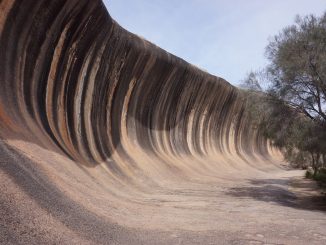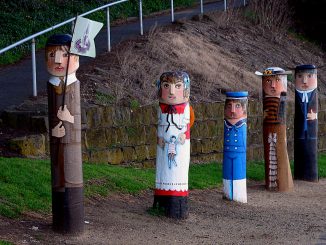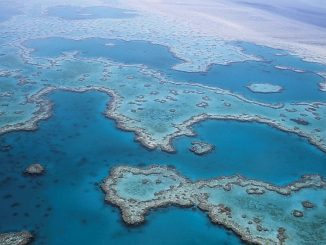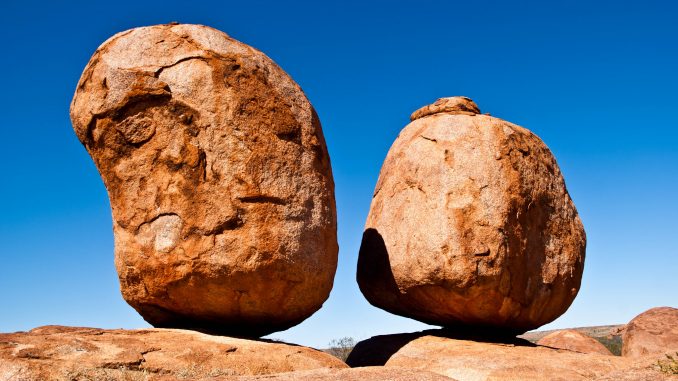
In a part of the world known for extraordinary landscapes, it seems that all rocks are not created equal. The Devils Marbles, dozens of large granitic boulders that make up part of the Karlu Karlu/Devils Marbles Conservation Reserve in Northern Territory, Australia are proof that the world is filled with strange and wonderful things.
It is said that the name Devils Marbles was created in 1870 when John Ross, the Scottish explorer said of the land while on the Australian Overland Telegraph Line Expedition, “This is the Devil’s country, he’s even emptied his bag of marbles around the place!”.
Originally known as Devils Marbles Reserve when it opened in October 1961, the name was changed to Devil’s Marbles Conservation Reserve in 1979 under the Territory Parks and Wildlife Conservation Act.
Of great cultural and spiritual significance to the Aboriginal owners of the land, the Devils Marbles, and the greater reserve serve to protect one of the oldest religious sites in the world. Karlu Karlu as it’s known to the local Aboriginal inhabitants, is a term for both the rock formations and the surrounding area.
In 1952 one of the boulders was removed from the reserve and taken to Alice Springs where it was used in a memorial to John Flynn, the founder of the Royal Flying Doctor Service. The boulder was chosen because of Flynn’s attachment to the Australian outback, and while the removal of a boulder was done with the best of intentions, it was taken from a particularly sacred site of the Aboriginal community, particularly the Aboriginal women of the region. After 45 years of negotiations, the boulder was taken back to its original site and a similar, but non-sacred boulder was donated by the Arrant people to be used in its place.
In 1982, much of the reserve became a registered sacred site by the Aboriginal Areas Protection Authority, and ownership of Karlu Karlu/Devils Marbles was officially passed from the Parks and Wildlife Service of the Northern Territory back to the Traditional Owners in 2008.
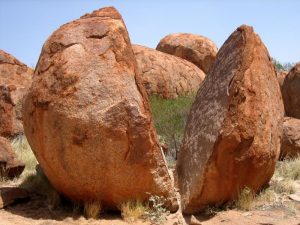
During the hot daylight hours the boulders ever so slightly expand and when night falls and the weather cools they likewise contract slightly. This cycle of expansion and contraction creates small cracks which sometimes grow large enough to split the giant rocks in half.
The Devils Marbles are accessible year round and the reserve is one of the most popular attractions in the Barkly region, particularly from May to August when the weather is cooler. The Marbles are also easily accessed from the Stuart Highway that connects Darwin to Alice Springs.
Devils Marbles Facts
- The large boulders are found mainly in the western side of the reserve.
- The Devils Marbles are amongst the most famous Australian attractions and are right up there with Uluru and the Olgas in cultural importance.
- Devils Marbles Conservation Reserve covers 1802 hectare.
- On 6 July 2011, corresponding with the joint management structure, the name Karlu Karlu/Devils Marbles Conservation Reserve was assigned to the site.
- Accounts of local Aboriginal people believing the boulders to be eggs of the mythical Rainbow Serpent are incorrect.
- Being one of the most widely recognized symbols of Australia’s outback, the Devils Marbles are also one of the most visited reserves in the Northern Territory with more than 100,000 visitors annually.
- In 1982, the majority of the reserve was registered as a sacred site by the Aboriginal Areas Protection Authority.
